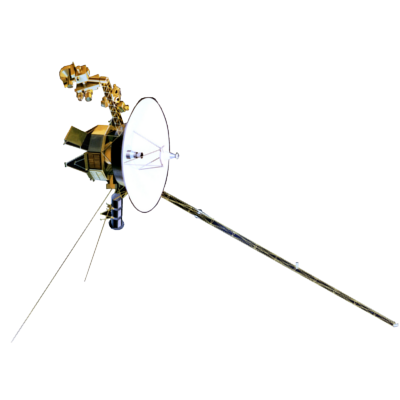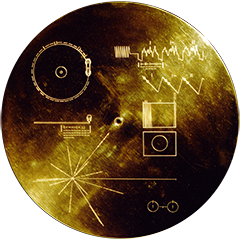Voyager LECP Data Analysis Handbook
Data File Descriptions
Experiment Data Record (EDR) Format Specification
APPENDIX A: Decommutation Map Record Format
The purpose of the Decommutation Map record is to supply the appropriate information to allow interpretation of engineering parameters from the spacecraft engineering telemetry. The record is composed of the Standard Record Header described in Appendix C, seven words of spares defined as the subheader and data block which contain the channel Identifier by commutator position (Table A-1). The channel Identifiers would contain the Measurement Number, Table 4 in document 618-205, FR-3-280A.
The commutator position states the timing reference and deck location and MF, as depicted in Figure A-5 below.
Figure A-1 diagrams the logical record structure.
Figure A-1. EDR Engineering Decommutation Map Record
|
HEADER (60-32 bit words) |
SUBHEADER 7-32 bit words (Spares) |
DECOMMUTATION MAP
DATA BLOCK (112-32 bit words) |
= (179 words) |
Figure A-5 Engineering Telemetry Format Structure

The procedure for using the decom maps is as follows:
- In document 618-205, FR-3-280A, use Table 4 to find the function(s) you desire and the corresponding measurement number(s).
- Drop the 'E' on the measurement number and scan the decom map for that number. Using the physical location(s) of the desired measurement number, establish the corresponding deck number(s) according to Figure A-4 of this document.
- Using the deck number(s), locate the MF and word position(s) in Figure A-5 of this document.
- Scan the engineering records for the defined MF(s) and word position(s) to obtain the data required.
Figure A-4. EDR Engineering Decommutation Map Data Format
|
EDR |
Bits |
0 |
31 16 |
0 |
|---|---|---|---|---|
| 1 | MAP WORD 1 DECK 100 |
MAP WORD 2 DECK 101 |
MAP WORD 3 DECK 102 |
MAP WORD 4 DECK 103 |
| 3 | MAP WORD 5 DECK 104 |
MAP WORD 6 DECK 105 |
MAP WORD 7 DECK 106 |
MAP WORD 8 DECK 107 |
| 5 | MAP WORD 9 DECK 108 |
MAP WORD 10 DECK 109 |
MAP WORD 11 DECK 110 |
MAP WORD 12 DECK 111 |
| 7 | MAP WORD 13 DECK 112 |
MAP WORD 14 DECK 113 |
MAP WORD 15 DECK 114 |
MAP WORD 16 DECK 115 |
| 9 | MAP WORD 17 DECK 300 |
MAP WORD 18 DECK 301 |
MAP WORD 19 DECK 302 |
MAP WORD 20 DECK 303 |
| : |
. . . . |
|||
| 23 | MAP WORD 45 DECK 328 |
MAP WORD 46 DECK 329 |
MAP WORD 47 DECK 117 |
MAP WORD 48 DECK 118 |
| 25 | MAP WORD 49 DECK 119 |
MAP WORD 50 DECK A00 |
MAP WORD 51 DECK A01 |
MAP WORD 52 DECK A02 |
| : |
. . . . |
|||
| 107 | MAP WORD 213 DECK 213 |
MAP WORD 214 DECK 214 |
MAP WORD 215 DECK 215 |
MAP WORD 216 DECK 216 |
| 109 | MAP WORD 217 DECK 217 |
MAP WORD 218 DECK 218 |
MAP WORD 219 DECK 219 |
MAP WORD 220 DECK 156 |
| 111 | MAP WORD 221 DECK 157 |
MAP WORD 222 DECK 158 |
MAP WORD 223 DECK 159 |
Spares |
Next: Appendix B
Return to EDR main page.
Return to Data File Descriptions main page.
Return to Voyager
LECP Data Analysis Handbook Table of Contents.
Return to Fundamental
Technologies Home Page.
Updated 8/9/19, Cameron Crane
VOYAGER 1 ELAPSED TIME
*Since official launch
September 5, 1977, 12:56:00:00 UTC
VOYAGER 2 ELAPSED TIME
*Since official launch
August 20, 1977, 14:29:00:00 UTC
QUICK FACTS
Mission Duration: 40+ years have elapsed for both Voyager 1 and Voyager 2 (both are ongoing).
Destination: Their original destinations were Saturn and Jupiter. Their current destination is interstellar space.



